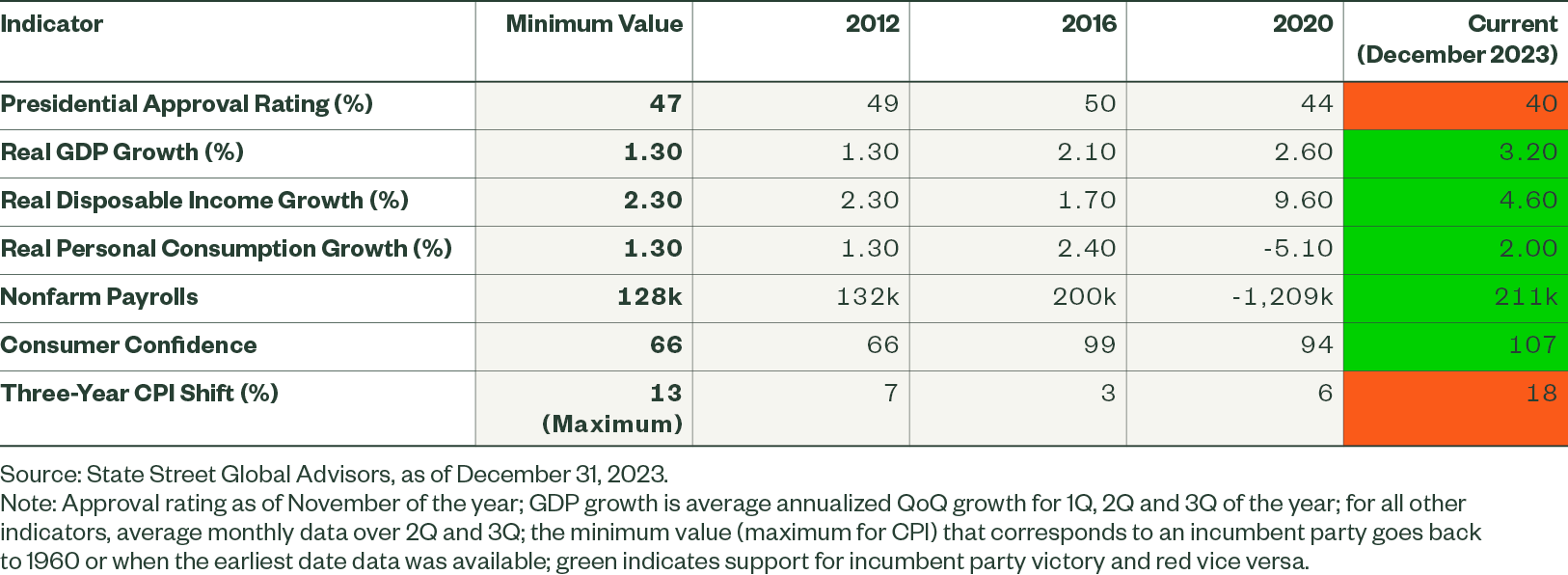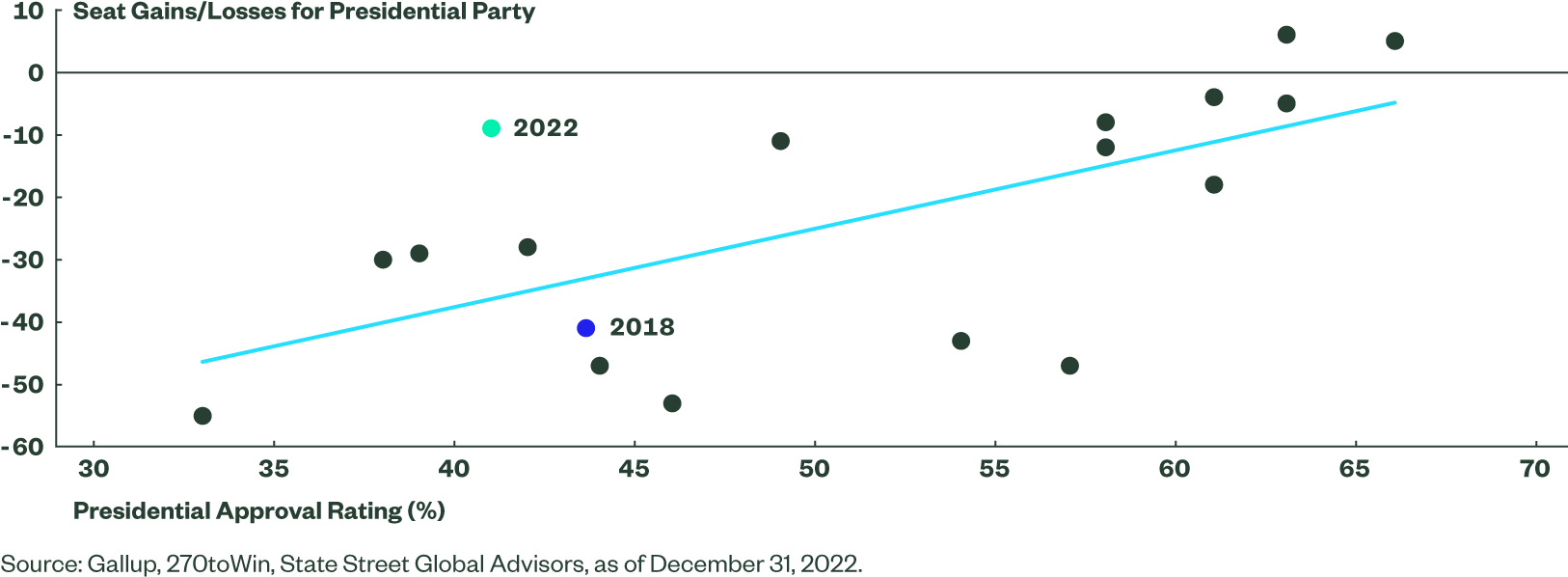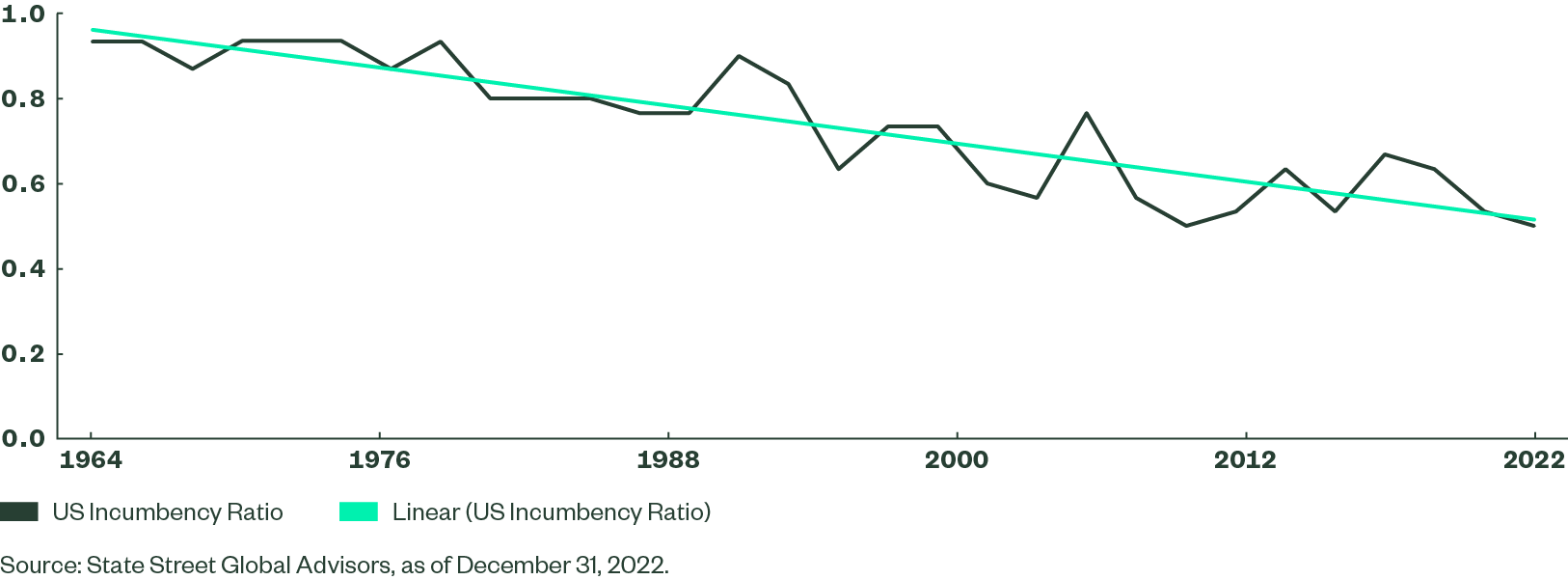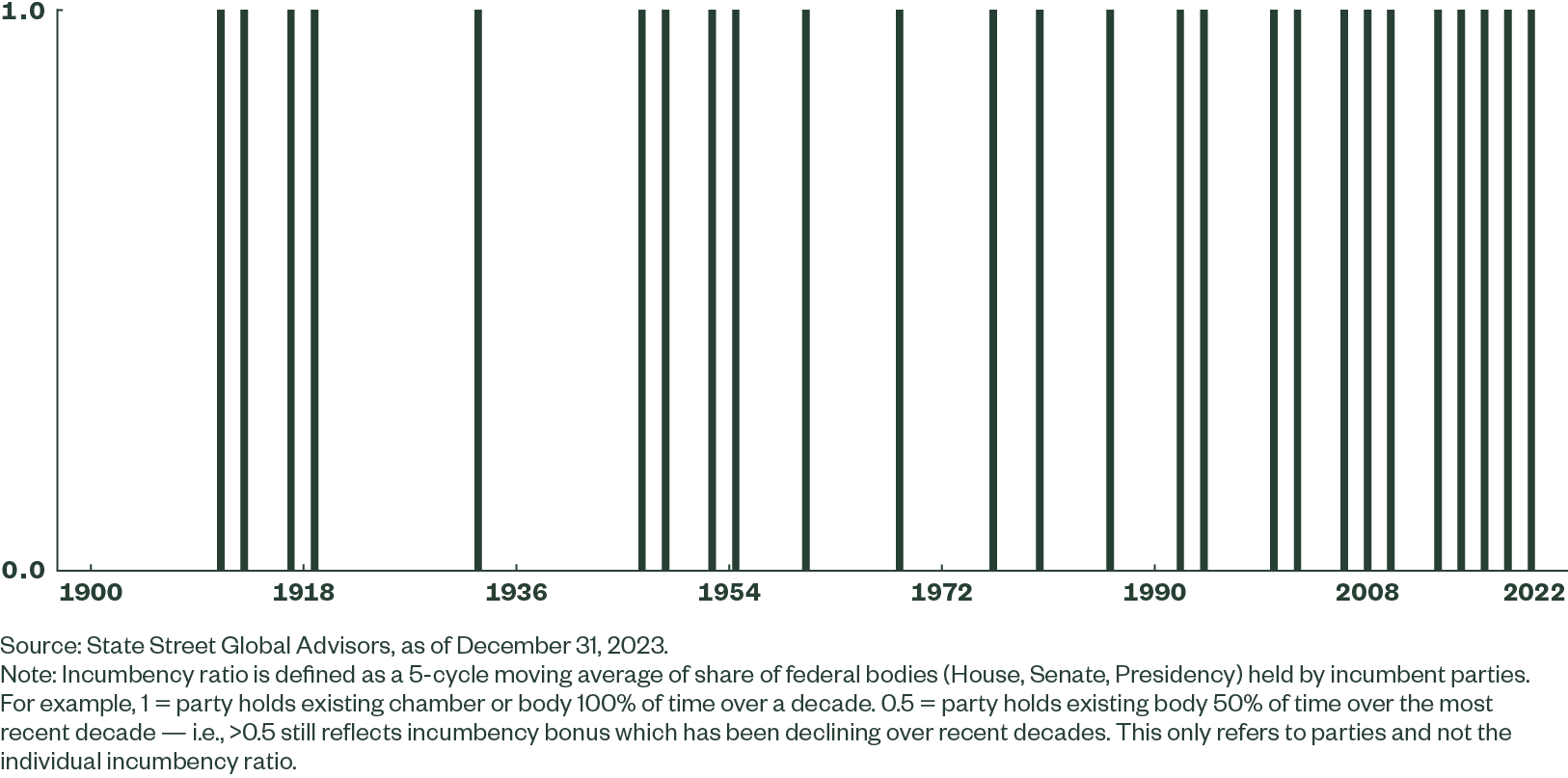2024 US Presidential Election Preview
Welcome to our 2024 US Elections coverage. Over the upcoming months, we will examine various aspects of the election and their market implications. This first article in the series puts the presidential election in a larger context and highlights what to watch for leading up to the election day in November.
Macroeconomic Backdrop to 2024 Elections
Until recently, macroeconomic performance has been a strong predictor of election outcomes, and it is still a good place to start. At this point in the election cycle, the macroeconomic backdrop favors President Joe Biden more than what political polls suggest. Most macroeconomic indicators date back only to the 1960s, but if we review those that correlate best with election outcomes, we see a very mixed picture, both at the national and (swing) state level.
Notably, most of these indicators measure economic well-being in real terms — so high inflation in 2021-2023 has negatively impacted these data points. But with disinflation taking hold, these data points have been improving and typically the data from the first calendar half of an election year has the strongest predictive power (Figure 1).
Figure 1: Current Macro Indicators Mostly Favorable for the Incumbent

It’s Not All About the Economy
Of the above values, presidential approval rating is one of the longest-running standardized polls in the world and tends to be a trustworthy gauge of public opinion. Current polls find Mr. Biden’s approval lower than any incumbent who succeeded in being re-elected — and lower than former President Donald Trump’s at the same point in his first administration.
Extraordinary issues continue to drive voter behavior and turnout, both nationally and at a state level. Ongoing Republican Party pushback against the legitimacy of the 2020 election has concerned parts of the electorate, especially independent-leaning voters. And the Supreme Court’s landmark decision in June 2022 that permits abortion bans by state governments likely increased voter turnout in the 2022 midterms.
The result has been a wide outperformance of Democratic candidates in elections in 2022-2023 relative to the president’s weak approval rating. In fact, the 2022 midterm elections were the strongest outperformance on record relative to expected outcome based on approval rating, albeit still being a loss overall for Democrats (Figure 2).
Figure 2: Democrat Candidates Outperform Relative to Mr. Biden’s Unpopularity

US Elections in Historical Context
The current political climate has made federal elections generally more volatile. In highly polarized societies that are narrowly split, power shifts happen more frequently due to smaller and smaller groups of voters exercising their specific interests. This trend can be traced from the middle of the 20th century, if one were to track the national incumbency ratio at a party level using a decadal moving average of federal elections to measure the rate at which a party retains control of a chamber of Congress or the White House.
For instance, during the Cold War, the US political system was remarkably stable – few power transitions occurred beyond the changing party affiliation of the president. This normalized in the 1990s and in recent years has dropped to all-time lows, to a point where the chance of a party retaining control of either a chamber of Congress or the White House has become a matter of a coin toss (Figure 3).
Figure 3: A Party Retaining Political Control a Matter of Chance

In short, this past decade has been the first since the early 20th century where some change has occurred every two years. Given the strong odds that Republicans will regain control of the US Senate in 2024, this pattern is likely to continue (Figure 4).
Figure 4: The Past Decade Has Witnessed the Greatest Political Flux in a Century

US Presidential Election to Have Unprecedented Global Impact
Higher political volatility alone would not be so problematic for markets if the macroeconomic and geopolitical environments were more stable and robust.
The 2024 elected administration will likely inherit a world with major regional military battles, ongoing trade conflicts, national security concerns, and technology disruptions. Increased political polarization can drastically affect policy outcomes, resulting in frequent changes of power as well as large policy swings. This is the main reason financial markets are even more attuned to US elections now than in prior decades — US elections genuinely have more macroeconomic and market impact.
In this regard, foreign policy will be more relevant to markets than usual, given the implications for the credibility of the US alliance system. Mr. Trump’s return to the White House would imply higher fiscal and security costs for European and other allies. In addition, the US fiscal trajectory itself is also on the ballot, though that is a function of the distribution of power across Congress and the presidency. Most of the widening of the fiscal deficit since 2017 has occurred during periods of one-party control in Washington or during the critical phase of the pandemic.
Since then, the current political makeup has engaged in repeated budgetary battles and will likely settle on a modest path of fiscal consolidation. But fiscal expansion could be back on the table depending on the post-election makeup of the executive and legislative branches.
Lastly, recent administrations have leveraged executive power and rulemaking to a much greater extent, either to bypass the legislative process or to support major policy platforms. While these executive orders may be subject to vigorous political and legal challenges, they could also have an outsized impact on the nature and quality of policymaking across the government. This could also apply to the governance of the Federal Reserve and thus to the heart of US economic policymaking.
Figure 5: Surprises to Watch for in this Election Year
| A sensational upset in the early Republican primaries, especially in New Hampshire |
| The emergence of a final slate of third-party candidates eligible on ballots |
| Any exogenous shocks to the presidential candidates, either due to medical (both are the oldest candidates on record), reputational, or legal issues |
| Choice of running mate, early endorsements, party unity/divisiveness |
| Geopolitical or macroeconomic shocks that sway voter sentiment |
| Political and macroeconomic data in the six key swing states: Arizona, Georgia, Michigan, Nevada, Pennsylvania, and Wisconsin |
Source: State Street Global Advisors.
Investment Implications
The most immediate impact of the election year will likely be on the budgeting process between the Republican House and the Democratic President, which means a slightly tighter fiscal policy will prevail over the course of 2024. We expect the Fed to start cutting rates in the spring, driven foremost by disinflation but helped by election dynamics, which implies a slightly weaker US dollar compared to last year.
For US equities, presidential election years deliver an average annual price return of 6.8%, below the post-1948 average return of 8.8%. This is a plausible outcome for 2024 in light of the late 2023 market rally having already brought many of the gains forward and the slightly weaker economic growth expected this year.
The bottom line is that this election season is likely to be a nail-biter, and markets could be in for a bumpy ride, both ahead of the election day as well as thereafter.